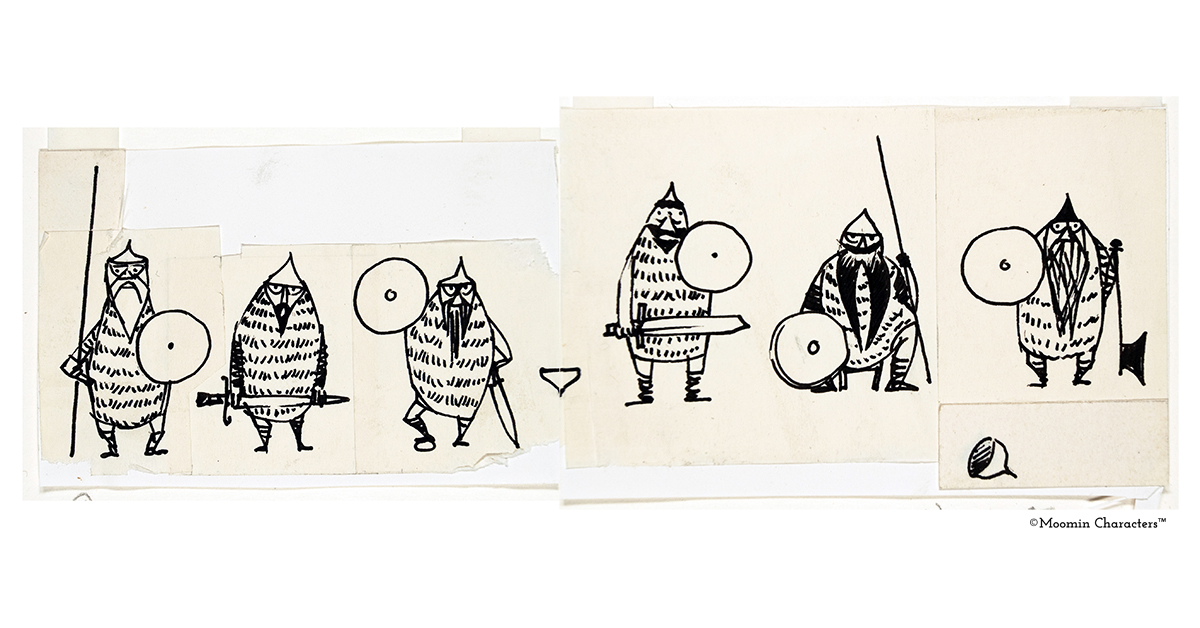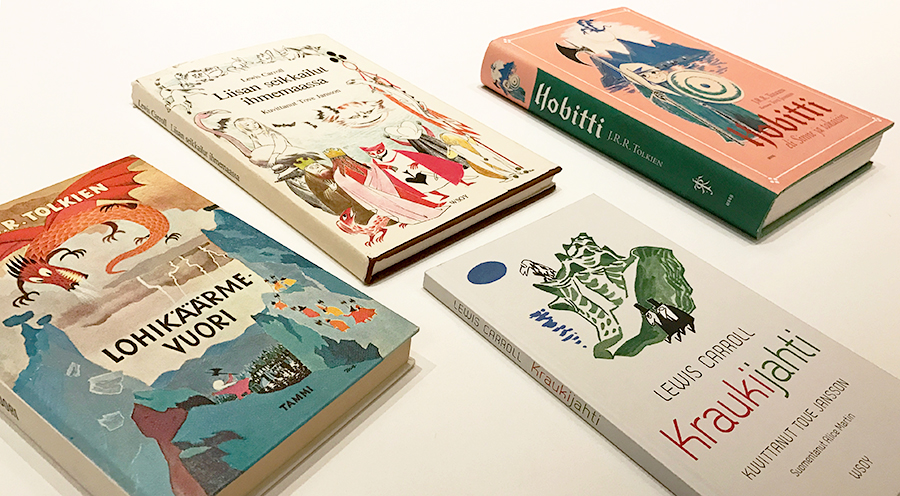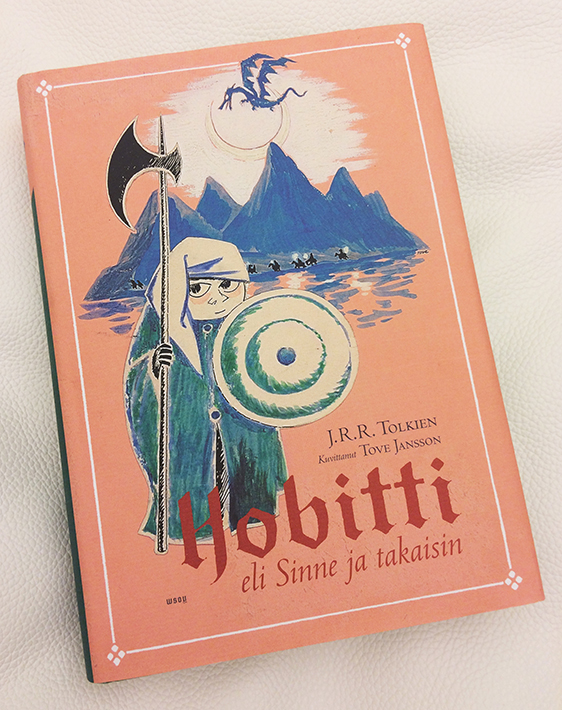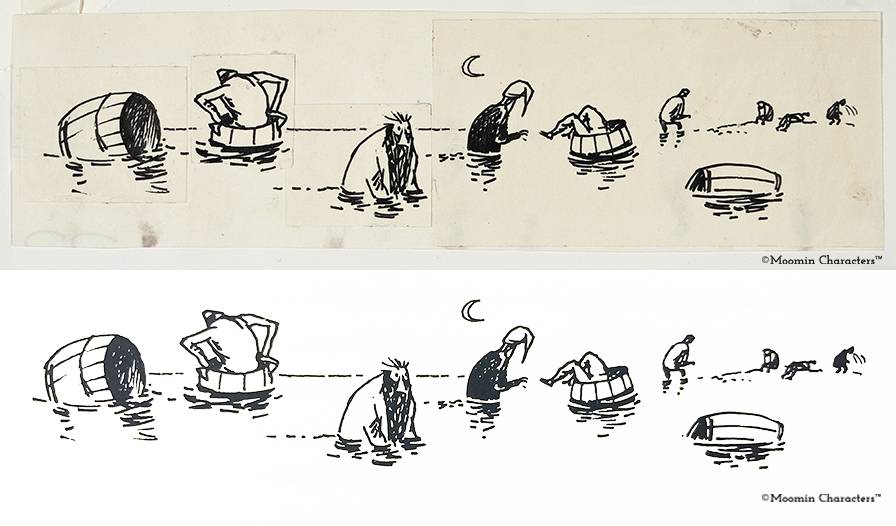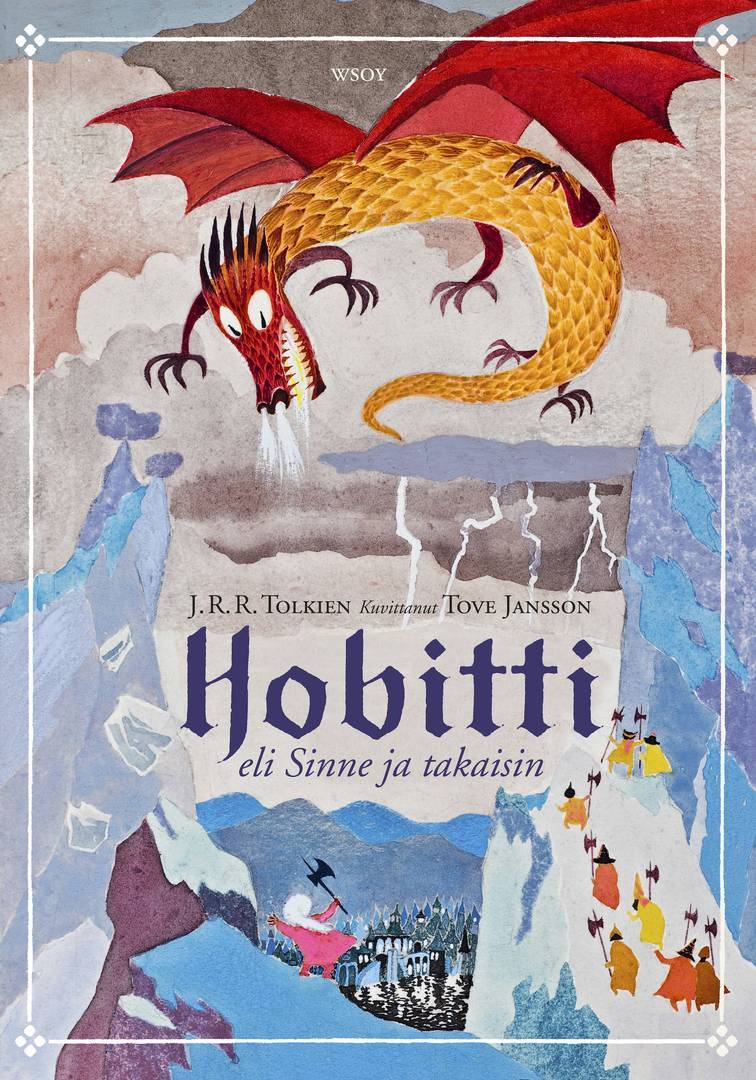During her career, Tove Jansson also illustrated books written by other authors. This was an opportunity for her to free herself from the "Moomin style".
In her youth, Tove Jansson illustrated works of many, predominantly Finnish and Swedish, authors. Later in her career, she got the opportunity to illustrate Swedish editions of stories by two internationally renowned British authors: J. R. R. Tolkien (The Hobbit) and Lewis Carroll (Alice’s Adventures in Wonderland) – both in the 1960s.
In 1959, Tove was also asked to illustrate the Swedish version of Carroll’s The Hunting of the Snark.
Unique opportunities to illustrate books by other authors were indeed interesting projects for Tove, and the illustrations were – like her illustrations usually – stunning and personal. Astrid Lindgren, the author of the universally popular Pippi Longstockings, worked as the editor and publisher of the Stockholm publishing house Rabén & Sjögren in the 1960s and asked Tove to illustrate the Swedish edition of The Hobbit.
In the end, Tove illustrated also the Finnish edition of this classic book, which – despite the language barrier – is hugely popular among the Tolkien fans in the UK. The first edition of the Swedish Bilbo – en hobbits äventyr was published in 1962 and the second in 1994. The first Finnish translation in 1973 was named Lohikäärmevuori and the next two editions in 2003 and 2011 were named Hobitti eli Sinne ja takaisin.
Freedom from the “Moomin style”
When illustrating The Hobbit, Tove found it very important to free herself from the “Moomin style”, which lead to changing the way she drew.
She tried different techniques and drew each figure freely again and again, 20 to 60 times, until she was happy with the result. Individual figures were pasted together into “a patchwork” that made up the book’s vignette illustrations (the first image below).
A vignette for J. R. R. Tolkien’s The Hobbit by Tove Jansson:
The individual figures and the final version of the illustration
Despite the Finnish publication being sought after by many Tolkien fans around the world today, Tove’s illustrations weren’t as welcomed, when the book first published. Tove loved the “horror” in the story and drew inspiration from her own childhood imagination, when illustrating Tolkien’s and Carroll’s work.
For example, her illustrations of Gollum were not what had been anticipated (image below). As explained in tovejansson.com, Tove created a rather large Gollum, which made Tolkien himself realise that he had never described his size in detail – and so, the second edition was amended to describe Gollum as a ‘small, slimy creature’.
Many of the full-page illustrations in the book were more similar to the characteristic style of Tove’s illustrations for the Moomin books (image below).
The 80th anniversary edition of The Hobbit in 2017
In 2017, Finnish publisher WSOY celebrated J. R. R. Tolkien’s 125th anniversary and the 80th anniversary of The Hobbit by releasing a new edition of the book in Finnish, Hobitti eli Sinne ja takaisin, illustrated by Tove Jansson.
The Hobbit’s 80th-anniversary edition in Finnish includes Tove’s illustrations and a cover previously only seen in The Hobbit‘s first Finnish edition Lohikäärmevuori, with an epilogue by Brian Sibley about how the illustrations on The Hobbit brought together three literary masters – J. R. R. Tolkien, Astrid Lindgren and Tove Jansson.

The Källskär painting – the only Moomin-themed painting by Tove Jansson
The mini documentary “Wild Cliffs” tells the fascinating story behind the Källskär painting, the only Moomin-themed painting by Tove Jansson.
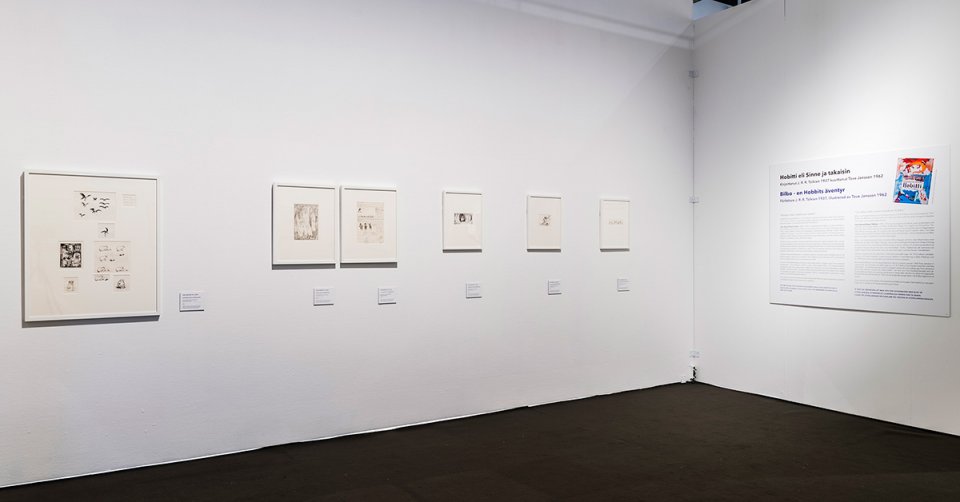
Tove Jansson’s Hobbit illustrations presented widely to the public for the first time!
Tove Jansson’s illustrations for J. R. R. Tolkien’s The Hobbit book are now presented to this extent for the first time!…
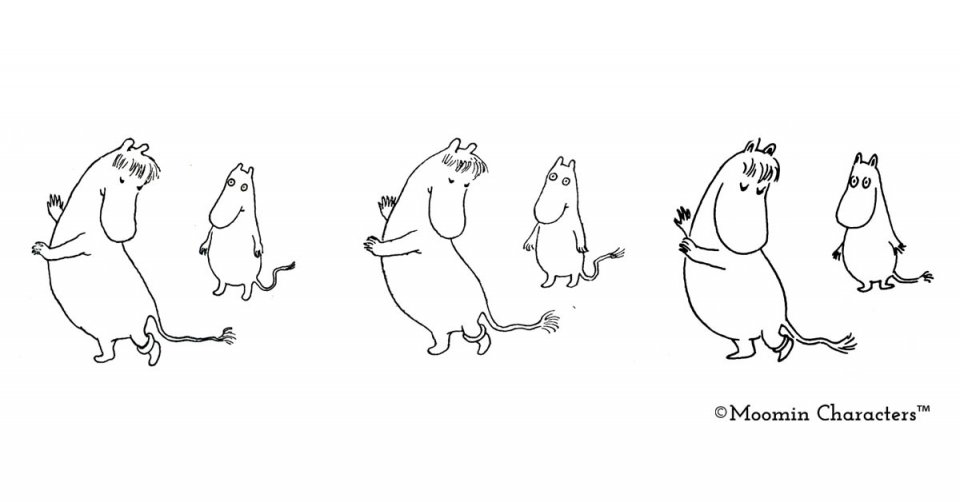
How Tove Jansson’s drawing style and the Moomins developed over the decades
Did you ever notice how Tove Jansson drawing style changed over the years? Find out how Moomins evolved along their author’s style.
